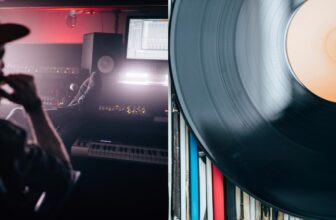8 Steps to Find Your Target Audience As A Musician

Finding your target audience as a musician is all about connecting with your audience. Research similar artists, analyze trends, engage with fans on social media, and build relationships with other musicians.
- Understand your target audience by identifying the group of people who will most likely connect with your music.
- Determine your music genre and niche, research similar artists, and analyze their fan base.
- Utilize data and analytical tools like Google Analytics and social media insights to gather information about your target audience.
- Engage with potential fans on social media, share your music, and build a community by networking with other artists to expand your reach.
- Promote your music through effective channels like blogs, influencers, and playlists, and monitor your growth to continuously adapt your strategy.
Contents
- 1. Understanding the Concept of Target Audience
- 2. Identifying Your Music Genre and Niche
- 3. Analyzing Similar Artists and Their Fans
- 4. Data is Your Friend (But Don’t Rely On It)
- 5. Engaging Your Audience Through Social Media
- 6. Building Community and Networking with Other Artists
- 7. Finding the Right Promotion Channels
- 8. Monitoring Growth and Adapting Your Strategy
- Conclusion
1. Understanding the Concept of Target Audience
A target audience is a specific group of people who are most likely to connect with and appreciate your music. For example, the Grateful Dead. Their target audience has a similar lifestyle as them and they connect with their music. They are so dedicated, that they even follow the band on tour.
The importance of knowing your target audience lies in these key points:
- Better marketing: Once you know who your audience is, you can create marketing plans that really speak to them and get better results.
- Great content: Knowing what your audience likes helps you create content that they’ll love, which can help you build a loyal fanbase.
- Smarter resource use: Focusing on a specific audience lets you use your time and money more effectively.
- Understanding your audience: Their preferences and values can help you build strong relationships and a more dedicated fanbase.
2. Identifying Your Music Genre and Niche
When figuring out your music style and audience, think about what your potential fans are into. This includes things like themes, vibes, and overall preferences. Knowing your niche and genre can help you market your music better and make it stand out from the rest.
Here’s how to pinpoint your music genre and niche:
- Figure out your music style: Think about what makes your music unique, like the tempo, tone, and melody. This will help you decide which genre your music fits into.
- Think about your themes and messages: Consider what your lyrics or instrumentals are all about and how they make your audience feel.
- Find out what your audience likes: Identify things your fans have in common, like their age, lifestyle, and musical taste, to help you connect with the right people.
- Know your audience appeal: Figure out if your music is more mainstream or for a niche audience. This will help you promote your music in the right way.
3. Analyzing Similar Artists and Their Fans
Researching successful artists in your genre and understanding the demographics and tastes of their fans provide valuable insights into your own target audience. Analyzing similar artists and their fans helps tailor your marketing strategy, find inspiration, and position yourself in the music industry.
Some benefits of researching similar artists and their fans include:
- Find your audience: Looking at who other artists’ fans are can help you find people who might like your music too.
- Get inspired: Seeing what successful artists in your genre are doing can give you ideas for your own music and promotions.
- Collaborate: You might find people to work with by looking at other artists’ fans and seeing who might be a good fit for you.
- Stand out: Checking out other artists can help you see what’s out there and figure out how to make your music unique.
4. Data is Your Friend (But Don’t Rely On It)
Platforms like YouTube Analytics, Spotify’s Artist Insights, and Google Analytics offer valuable information to help you better understand and connect with your listeners.
These tools can offer the following benefits:
- Demographics: Find out how old your listeners are, where they’re from, and what gender they are.
- Behaviors: See how people interact with your content, like how often they listen or watch your content, and if they add you to their playlists.
- Engagement: Check out likes, comments, and shares to see what your fans are really into.
- Trends: Watch how your audience grows and see what’s popular in your genre to find ways to get your music out there.
Though, you have to remember that music is an art, and that you shouldn’t just be relying fully on data when figuring out where you fit in.
5. Engaging Your Audience Through Social Media
One of the best ways to engage with your audience is through social media. It helps establish a strong online presence, create a unique visual identity, and form meaningful connections with fans. Artists like Homeshake and Unknown Mortal Orchestra are active on Twitter and sometimes engage with their fans.
Tiktok is one of the most popular social media sites, and it’s helped a lot of artists reach a wider audience. For example, Steve Lacy’s fanbase grew to mainstream heights after his song Bad Habits went viral on the platform. Check out this article we wrote about Tiktok and its impact on the music industry to know more.
Here’s how social media engagement benefits musicians:
- Constant communication: Sharing regular updates on your activities, events, and new releases keeps fans informed and maintains their interest in your music.
- Memorable identity: Developing a unique and identifiable visual style for your online presence helps fans recognize and remember you, making a lasting impact.
- Fan interaction: Responding to comments, direct messages, and sharing fan-generated content creates a stronger connection with your audience and makes them feel appreciated.
- Expanding reach: A well-maintained social media presence can attract new listeners, and boost the sharing of your content, resulting in organic audience growth.
6. Building Community and Networking with Other Artists
Building a community and networking with other artists play a vital role in expanding your reach and fostering professional growth.
The benefits of community building and networking include:
- Musical collaboration: Connecting with other artists may result in creative collaborations that benefit both parties through combined fan bases.
- Valuable partnerships: Networking can lead to partnerships with industry professionals like event organizers, producers, and agents that enhance your career opportunities.
- Shared knowledge and resources: Engaging with a community of artists allows you to exchange ideas, tips, and resources that contribute to your development and advancement in the music industry.
- Increased visibility: Associating yourself with established artists or participating in events can boost your visibility and credibility, attracting more listeners and opportunities.
Artists of different genres often collaborate, reaching an audience they otherwise would not have. For example, a lot of hip-hop artists sample Tame Impala in their tracks. This led to him collaborating on songs with hip-hop artists and even performing in each other’s shows.
7. Finding the Right Promotion Channels
Some effective ways to promote your music include getting featured on music blogs, playlists, and radio stations, all of which cater to different listener preferences and habits.
Here are some promotion channels to consider:
- Music blogs: Submit your music to relevant blogs that cover your genre, as they often feature new artists and can introduce you to their established reader base.
- Playlists: Seek inclusion on popular playlists across platforms like Spotify and Apple Music, which can expose your music to thousands of potential listeners and boost your stream counts.
- Radio stations: Submit your tracks to local, national, and internet radio stations, aiming for airplay on shows or stations that cater to your genre and target audience.
- Social media and influencer campaigns: Partner with influencers or utilize social media advertising to reach a wider audience with targeted promotional efforts, increasing the chances of attracting new fans.
8. Monitoring Growth and Adapting Your Strategy
Monitoring your growth and adapting your strategy are crucial steps in successfully reaching your target audience as a musician. Regularly reviewing your progress and implementing feedback enables you to refine your approach, ensuring continuous improvement in your audience engagement efforts.
The importance of growth monitoring and strategy adaptation includes:
- Identifying successful initiatives: By keeping track of your progress, you can determine which strategies work best in reaching your target audience.
- Implementing feedback: Listening and responding to feedback from your fans and industry professionals helps improve your music and promotional approach.
- Pivoting when necessary: If you find that your existing strategy isn’t working, monitoring your growth can provide insights into when it’s time to change direction or try a new approach.
- Continuous improvement: It’s important to regularly assess and adapt your strategy to keep up with changing audience preferences, trends, and technology.
Conclusion
As a musician, finding your target audience is crucial for a successful career. Understand your audience, identify your genre and niche, and use analytical tools to create an effective promotional strategy. Engage on social media, network with fellow musicians, and explore promotion channels to expand your reach. Monitor your growth and adapt based on feedback for continuous improvement. A well-defined and engaged audience is key to a thriving music career.





